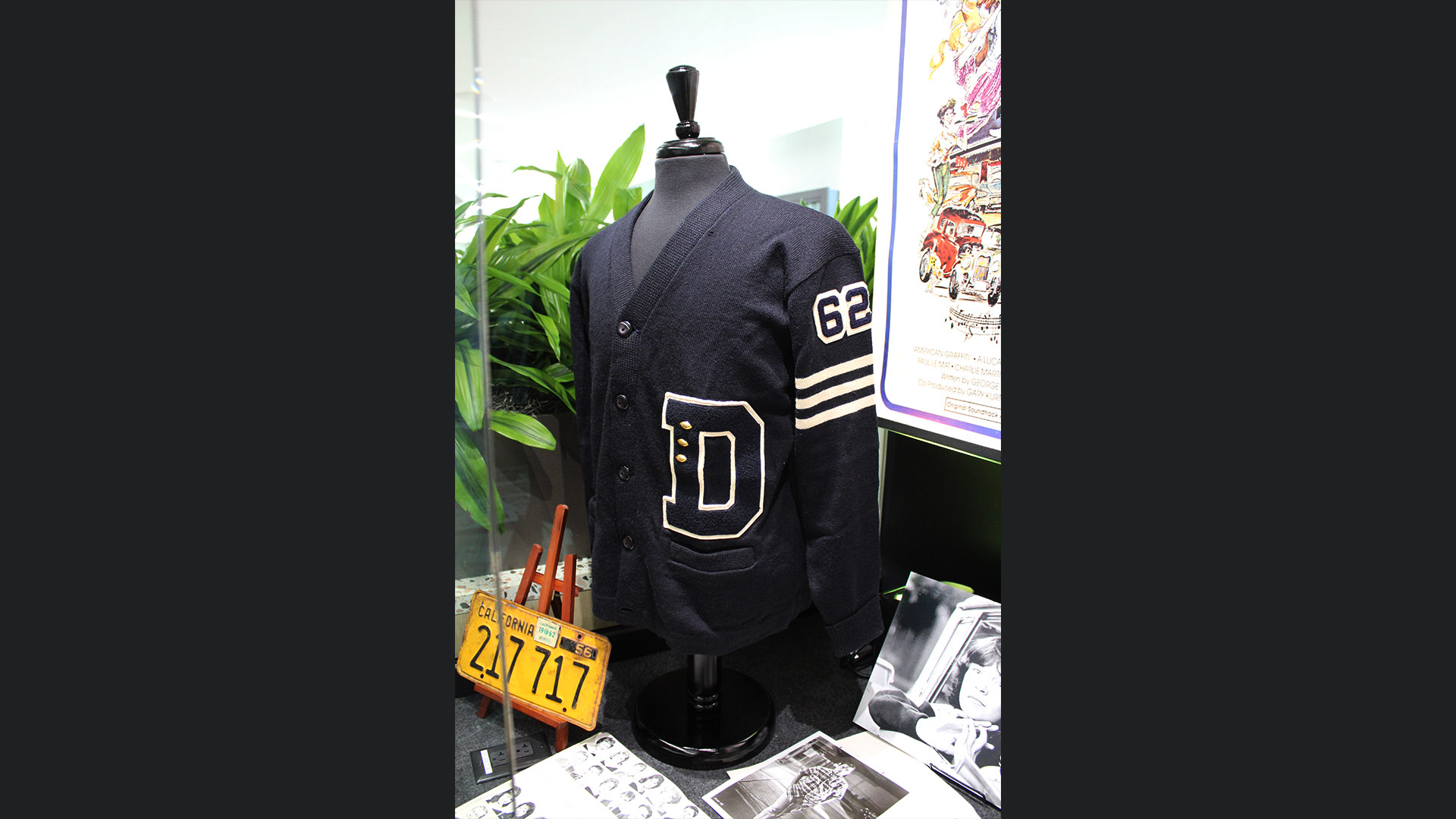History in Objects: Treasures from American Graffiti
Take a behind-the-scenes look at rare items from a special exhibit inside the walls of Lucasfilm.
“History in Objects” is a continuing series exploring Lucasfilm’s legacy stretching from our founding in 1971 to today. Through objects both rare and commonplace, the company’s past, present, and future are brought to life.
At Lucasfilm headquarters in San Francisco, company historians have created a special exhibit display of rare materials from our very first production, American Graffiti, which is currently celebrating its 50th anniversary. Dozens of pieces of memorabilia, cultural artifacts, and behind-the-scenes items chart the story of Graffiti’s making in 1972 and public reception when it first debuted in 1973. This special edition of our “History in Objects” series explores a handful of these treasures.

Real Life Origins
American Graffiti’s story about a group of teenage friends cruising the streets of their small town on a summer evening was inspired by director George Lucas’ adolescence in Modesto, California. This display includes an original 1962 Downey High School yearbook, showing Lucas’ senior portrait, as well as an original Downey letterman sweater belonging to Lucas’ classmate Randy Hearne (kindly donated by the Hearne family). The late actress Cindy Williams (Laurie Henderson) wore a sweater just like this in the film, though the Downey name was fictionalized to “Dewey.”

Creating a Movie Poster
Artist Mort Drucker was perhaps best known for his work on MAD Magazine, one of George Lucas’ favorite publications. Hired to create American Graffiti’s theatrical poster, Drucker’s initial design featured Wolfman Jack prominently located at the top of the assemblage. When it became necessary to remove the disc jockey due to clearance issues, Drucker’s work was re-positioned by hand into a new arrangement. Our display includes the final collage that was photographed for Graffiti’s theatrical poster, as well as one of Drucker’s original concept sketches.



Mel’s Drive-in
The original Mel’s Drive-in that appears in American Graffiti opened on Van Ness Avenue in San Francisco in 1947. Just a few years after the Lucasfilm production filmed there in 1972, the structure was torn down. Featured in the display are a handful of original items from the Van Ness Mel’s and the chain in general. The t-shirt sporting the slogan “Home of American Graffiti” was worn by the Van Ness Mel’s staff during its last years of operation.



An “Original” Score
Both American Graffiti and its 1973 counterpart The Sting featured the groundbreaking use of non-original soundtracks. George Lucas wrote Graffiti’s script with his childhood collection of 45 rpm records, noting specific songs for each scene in the film. Graffiti’s music licensing was a huge undertaking, costing nearly 1/7th of its total budget (some music that Lucas hoped to include, like Elvis Presley’s, was excluded due to the high cost). The resulting American Graffiti double-record soundtrack released by MCA became a top seller. Today, the practice of hiring a music coordinator to help curate existing music for a film’s score is common practice.



The Movie’s Premiere
American Graffiti’s premiere was held a week before its public release on July 24, 1973 at the Avco Center Cinema in Los Angeles. Radio disc jockey Wolfman Jack (who famously appears in the film) attended the event and posed for a photo with George Lucas holding a Graffiti bumper sticker. At the time, Lucas was already busy developing his story notes for a new space fantasy called The Star Wars, which wouldn’t begin filming for another two-and-a-half years.

Lucasfilm | Timeless stories. Innovative storytelling.

